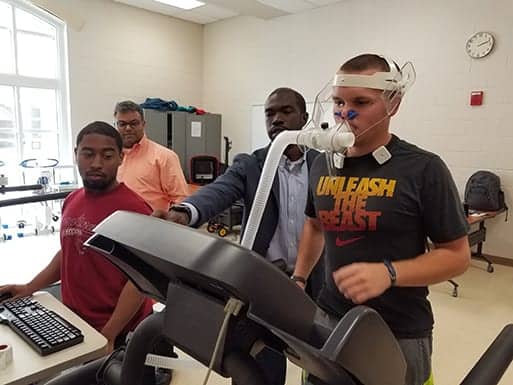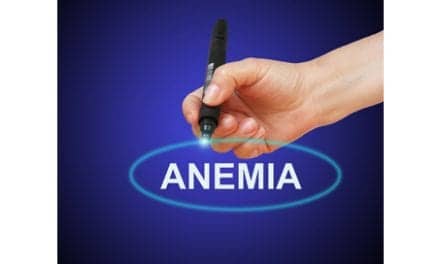
A study participant’s breathing and heart rate are measured while walking on a treadmill and wearing a Respa sensor.
The Respa breathing sensor could be an effective method for enabling athletes to measure lactic acid and ventilatory threshold levels, helping them to avoid overtraining and prevent muscle damage and injury, according to researchers.
Winthrop University investigator Tyrone Caesar, PhD, conducted the 3-month study using the Respa, a wearable analyzer that tracks breathing patterns during workouts.
Via its companion app, the device is designed to provide real-time alerts that aim to help users stay in their optimal breathing zone. In addition, it provides post-workout analyses to help users track their progress and plan their workouts.
“Lactic acid threshold and ventilatory threshold are commonly used as a reference point for exercise intensity,” says Dr Abhijit Dasgupta, PhD, co-founder and chief data science officer at Washington, DC-based Zansors, developer of the Respa, in a media release.
“Measuring an athlete’s lactic acid threshold and ventilatory threshold can prevent overtraining and muscle damage. However, everyday athletes do not typically have access to these levels without going to a lab. The goal of this study was to understand just how effective an everyday wearable sensor like Respa could be in providing athletes with this type of insight—during their workouts.”
In the study, Caesar and his research team studied six athletes on a treadmill wearing a Respa breathing sensor. They progressively increased the incline of a treadmill, then they used laboratory equipment to measure breathing and heart rate to determine when the ventilatory threshold was attained, the release explains.
The researchers discovered that acoustic breathing signals detected by Respa show a signature pattern when the athlete reaches ventilatory threshold. This is characterized by a small decrease in signal followed by a rapid increase; the characteristic dip in signal occurs roughly a minute before VT is reached.
By detecting this pattern, Respa can quickly notify athletes that they are close to hitting their ventilatory threshold, thus enabling them to immediately shift exercise intensity and delay the onset of the ventilatory threshold. Moreover, once VT is reached during these experiments, the signal continues to rise rapidly.
“These results of this proof-of-concept study show that measuring ventilatory threshold outside of the lab is possible for anyone, anywhere,” Dasgupta continues.
In a separate news release, Dasgupta notes that there are plans to integrate the Respa technology with Amazon Alexa to easily monitor physical activities and health metrics.
“Alexa is the perfect complement to Respa,” he adds in the release. “The algorithms and analytics behind Respa fit well with voice-activated devices like Alexa.”
For more information, visit Respa.
[Source(s): Zansors, PRWeb]





